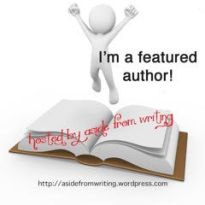(This post was originally from April 10, 2020.)

Yahoo Image Search
A few disclaimers here because we’re heading into delicate territory again. Eh, I’m just copying and pasting here. I am not an expert on mental health by any means. I read up on it and have my own experiences to work off, which is what fuels these posts. Also, I always try to add some humor into my posts, especially the 7 Tip Lists. I find that humor can relieve tension and allow for serious stuff to be listened to and swallowed more easily. So, let’s get to this one . . . Okay . . . Yup . . . Staring it now . . . I’m really twitchy about this one because I’m not striking close to home. I’m hitting the roof dead center.
- Like depression and sadness, be careful using anxiety as a synonym for nervous or mixing the two up. This can be done and I do it a lot too. A person can be momentarily anxious and that’s fine. When it comes to the mental illness, it’s much heavier and long-lasting. A character with anxiety will see a small problem and have a reaction that one could say is ‘too big’ for it. For example, maybe they are texting back and forth with a friend, but there is a sudden stop. An anxious person will fixate on it for hours and imagine that they offended the friend, something bad happened, or any number of horrible ideas. The possibility of the friend being busy, showering, bathroom, phone losing power, or anything innocent doesn’t click very often.
- Anxiety can make for awkward social situations, which may be tempting to play up for laughs. It’s easier to do it for this than depression because people may focus on the physical side to the anxiety issue. They may flail while babbling or comically rush out of the room in some fashion. If this is the tone of the story then it can work since the character isn’t the only one being the source of humor. If they’re the only ones that it happens to then you may want to rethink things.
- Panic attacks are a thing and they aren’t pretty. Stereotypically, it’s shown as hyperventilating and nearly passing out. There can be more to it and the severity isn’t always the same. Chest pains, rabid heartbeat, chills hot flashes, and trembling show how some are visible and some are internal. If the attack reaches the point where the character has limb spasms because of the shaking or even locking up entirely then it shows the severity. Another symptom is itching, which I’ve noticed getting used in a few recent shows and animes. The more anxious the character gets, the more vicious the scratching.
- Unlike depression, a character with anxiety can voice a source even if it’s something that isn’t a big problem. The point is that they are worrying about whatever it is that has set them off. It could be a clear issue like fighting with a loved one or needing to pay bills. Yet, it can just as easily be that they have a small pain in their arm and start thinking they’re about to have a heart attack. Could also be the wrong arm for that or it’s clear to everyone else that it stemmed from earlier physical exertion. Again, a person with anxiety has a high chance of overreacting.
- Anxiety hampers the decision-making process. Once you go past the level of thinking clearly, you can’t immediately reel it in. So, these characters may have trouble acting under pressure. They can lock up or focus on a small part of the problem instead of the overall issue. Yes, the red button to save the world is in the locked safe and it’s good that you know this, but there’s also a fire-breathing dragon, lasers, and a very angry leprechaun that we have to handle first. Anyway, these characters may be snapped back to attention in some fashion, but it isn’t easy and you need to have them work up to this.
- These characters don’t always have to be hyper and constantly talking when they’re really anxious. In fact, there’s a higher chance of them turning inward because their thoughts are racing. They are stuck in the avalanche of paranoid thoughts that they no longer realize what is going on around them. This is not something that should be played up constantly, but it is a possibility. Don’t use the anxiety to routinely sideline the character for the majority of scenes.
- You will probably be tempted to have other characters attempt to calm the anxiety one down. Go for it, but decide on which tactics will work. Slapping and being aggressive probably won’t help. If anything, it will make the panic attack worse because now they’re upset that they made their friends mad. Positivity without any meat such as inspirational sayings or mindless cheerleading will fall on deaf ears or irritate. At least, I think they would, so feel free to ignore that one. Personally, I think having a character softly and gently coax the anxious one out of the attack is the best thing to do if you want interaction. Physical contact isn’t necessary, but an acknowledgement of emotions and slowly talking them out of the spiral can help even if it takes a lot of time.





Great tips. Wish I had this post while editing the manuscript I just turned in an hour ago. The author wrote a character with anxiety and I had to take her to task about some of the things you brought up, especially in number 7.
LikeLike
Thanks. Sorry that I didn’t get this up earlier. How bad were the mistakes?
LikeLiked by 1 person
It’s hard to explain to someone who doesn’t suffer from anxiety what someone who does goes through, especially if that person creates a character in a novel who deals with anxiety, but wants that character to “get over it” quickly. That was the issue–explaining that issues don’t instantly get solved; that they leave a mark on a person.
LikeLike
Ugh. The quick recovery is a common issue. Especially when it’s a long term anxiety disorder.
LikeLike
I remember this one. Good post. What rank was it?
LikeLike
#5. We count down to #1.
LikeLiked by 1 person
Got it.
LikeLike
I remember this one. It was excellent.
LikeLike
Thanks. 🙂
LikeLiked by 1 person
Very informative post. I always wondered about my own reactions in certain situations. As an introvert, traveling, crowded places and unfamiliar group settings have always made me uncomfortable. The isolation of COVID-19, in some ways, have been comforting for me although, if this makes sense, I’d rather isolate by choice instead of being told to.
LikeLike
Thanks. I can see how the isolation is comforting to certain people. You get a break from others, which we don’t get that often these days.
LikeLiked by 1 person
A perplexing observation that may or may not be helpful: one of my co-workers is a teacher who has anxiety. And at times, kids will act up enough that they give her panic attacks. But I, sitting 10 feet away, genuinely couldn’t tell what was happening. She has an incredible teacher face, I guess.
LikeLike
That’s common for many mental health issues. As you grow up, you learn to mask the panic attack or hold it off into you are ‘free’ to release. This is because we’re told that there’s a time and place for breakdowns. That does make sense because you have to function in society, so you develop ways to do this.
LikeLike